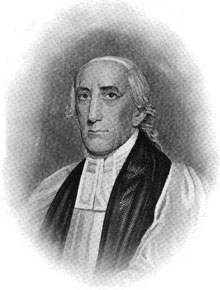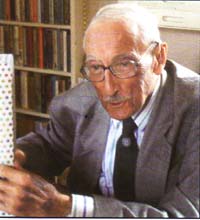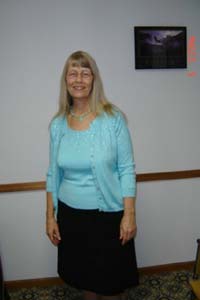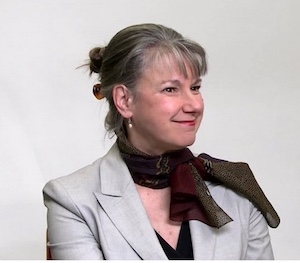|
William Saket (late 1200s–after 1327), of Southborough, St Peter in Thanet, is the earliest recorded Sackett. He was involved, with other tenants, in a legal dispute with the Abbot of St Augustine in 1317. The Justices of Eyre found in favour of the tenants, determining that horses and cows distrained from the tenants by the Abbot as surety for fines must be returned, and cancelling the fines. |
|
John Sackett (1585–1634), fisherman of St Peter in Thanet, was the brother who, according to family tradition, would have accompanied Simon Sackett the colonist to the New World and been the father of John Sackett of New Haven. John the fisherman died in St Peter in Thanet, so that, if he did accompany his brother, he must have returned. His will makes no mention of any children, making it very unlikely that he was the father of John of New Haven. |
|
Simon Sackett the colonist (1595–1635). Undoubtedly the most significant migration in the history of the Sackett family was that of Simon Sackett who, with his wife Isabel and their infant son Simon, emigrated in about 1631 from St Peter in Thanet, Kent, England, to the Massachusetts Bay Colony in America. Despite a short life—he had probably not reached forty when he died in 1635—Simon Sackett the colonist enjoys a pivotal position in the history of the Sacketts, becoming the progenitor of the major part of the American branch of the family. Some 18,000 descendants of Simon's have been identified so far (2019). |
|
Jeffery Sackett (1617–1695), was three times Mayor of Sandwich, Kent, in 1674, 1687, and 1693. His reputation was tarnished by a damaging court case involving a family dispute, which dragged on from 1677 to 1684. Although Jeffery does not emerge well from the record of the case, it evidently did not impede his later election as Mayor. |
|
John Sackett of New Haven (1620s–1684) migrated sometime before 1641 to New Haven, Connecticut, presumably from Thanet, Kent. He is the progenitor of the second line of American Sacketts. According to family tradition he would have been a nephew of Simon Sackett the colonist, but further research makes this unlikely. His origin remains a tantalizing mystery. |
|
Captain John Sackett (1697–1753), mariner of Margate, Kent, was master of several ships plying the Atlantic between London, Virginia, and Antigua, among other places, was once captured by the French but freed by British privateers, and survived shipwrecks. |
|
Nathaniel Sackett (1737–1805) was George Washington's spymaster during the American Revolutionary War. He set up an intelligence-gathering network, recruiting agents and informers behind the enemy lines, to discover the plans of the British forces. |
 |
Bishop Benjamin Moore (1748–1816) was the second Episcopal bishop of New York and president of Columbia College. He is now chiefly remembered for having given Holy Communion to United States founding father Alexander Hamilton on his deathbed. |
|
John Sackett (1757–1834) was the owner of the hoy Margate which was shipwrecked in a storm in 1802 with great loss of life while en route from Margate to London. The disaster made nationwide headlines and a public fund was set up to help bereaved families. |
 |
Augustus Sacket (1769–1827) was a New York lawyer and businessman who achieved fame when he acquired substantial tracts of unimproved land on the south-east shore of Lake Ontario and founded what was to become the strategically-important village of Sackets Harbor. |
 |
Professor Clement Clarke Moore (1779–1863) was credited with writing the poem, "A visit from St. Nicholas," beginning: "Twas the night before Christmas when all through the house / Not a creature was stirring, not even a mouse." |
|
Ann Sackett (1779–1869) and her husband John Cook had a then-record number of twenty-one children, a feat shared with the wife of a solicitor of Geneva. Ann had the 21 children at 20 births, the last two being twins. |
 |
Judge Gary V Sackett (1790–1865) was a judge, farmer, and businessman who developed much of Seneca Falls, New York. Among those entertained at his large residence (which still stands) were Abraham Lincoln, US Secretary of State William Seward, Seneca Chief Red Jacket, and Joseph Smith, founder of the Church of Latter-Day Saints. |
|
Thomas Baker Sackett (c1796–1837) was convicted of highway robbery on the streets of London and was sentenced to death by hanging. But at the eleventh hour, following frantic efforts by a number of concerned worthies who petitioned on his behalf, he was granted a reprieve from execution, the sentence being reduced to transportation for life to the convict colony of New South Wales. |
 |
Hon Hamilton Fish (1808–1893) was U.S. Secretary of State from 1869 to 1877 during the administration of President Ulysses S Grant, and had earlier served as Governor of New York. |
 |
Hon William Augustus Sackett (1811–1895) was a lawyer and a United States Congressman. He was earnestly antislavery and opposed the admission of any more slave states. His third wife, Mary Louise (Marvin), is commemorated in the so-called Sackett Gate at the Lincoln Avenue entrance to Greenridge Cemetery, Saratoga Springs. |
 |
General Delos Bennet Sacket (1822–1885) was a career soldier promoted to Brevet Major General for gallantry during the American Civil War, and later appointed senior Inspector General of the United States Army with the rank of Brigadier General. |
 |
Orsemus Sackett (1826–1896), the Yankee card-writer, lecturer, concert and lecture tour manager, inventor, and newspaper vendor, made, lost, and made again his fortune, and was a well-known if eccentric character in Grand Rapids, Michigan. |
 |
Jacob Thomas Sackett (1833–1904) of Saegertown, Pennsylvania, described modestly in census records as a blacksmith, was, more significantly, a skilled gunsmith, and, rather surprisingly given the delicacy of craftsmanship required, a violin maker. |
|
Colonel William Sackett (1838–1864), son of Hon William Augustus Sackett (see above), served in the American Civil War, rising to the rank of Brevet Brigadier General. He fought in the Battle of Gettysburg in 1863. He was mortally wounded in the Battle of Trevilian Station, Virginia, in 1864. |
 |
Jabez Sackett (1840–1925) was a schoolmaster, preacher, and temperance campaigner. He was a schoolmaster in Kent and Yorkshire before moving to Guernsey where he was a lay preacher in the Wesleyan Methodist circuit and became a leading light in the temperance movement. |
|
Lyman Belcher Sackett (c1840–before 1894) served as a soldier in the American Civil War before deserting and working his passage as a seaman to Australia. He settled in India and was the progenitor of several generations of Sacketts born there. |
 |
Augustine Sackett (1841–1914) was the inventor of drywall (known in the UK as plasterboard), which he patented in 1894 as Sackett Board. It is used today to clad walls and ceilings in virtually all new buildings. He was inducted in 2017 into the United States National Inventors Hall of Fame. |
 |
Samuel Arthur Sackett (1841–1932), a Mormon, fathered 24 children by polygamous marriages to sisters Mary and Laura Peterson. He left a fascinating account of life in the Old West, including details of religious discrimination suffered, particularly because of his polygamy. |
 |
Myron Ward Sackett (1841–1916), was for 37 years the Supreme Recorder of the Ancient Order of United Workmen, a mutual protection society having some half a million members. He was also secretary-treasurer of the National Fraternal Congress and editor of the Keystone Workman. |
|
William Edgar Sackett Jr (1848–1926) was a journalist and political author who made an unsuccessful bid for the Governorship of New Jersey in 1913. He founded the daily Jersey City News, but was best known for his book The Modern Battles of Trenton, a political history of New Jersey which was placed in every school library in the state. |
 |
Jacob Edwin Sackett (c1850–1898), son of Orsemus Sackett (see above), was a flamboyant impresario and theater and museum proprietor with a talent for sensational publicity who sought his fortune by entertaining the masses with everything from freak shows to opera. |
 |
Henry Sackett (1851–1928) emigrated in 1870 from Essex, England, to Texas, USA, and became a member of the Texas House of Representatives. Henry became suddenly wealthy when, in 1924, he leased a large tract of land to an oil company. Not having ever paid income tax before, he paid tax in that year of $57,000. |
 |
Clara Elizabeth Sackett (1859–1954), of Chautauqua County, New York, and Pinellas County, Florida, achieved distinction internationally as a portrait painter over a long career, having paintings exhibited in the Louvre in Paris and in the Boston Museum, and earning a listing in "Who's Who, Leading Women of America". |
 |
Henry "X" Ackley Sackett (1859–1938), son of Orsemus Sackett (see above), was a talented silhouette portraitist, but achieved notoriety as an adventurous eloper. He travelled widely in the United States, courting publicity for his business of making silhouettes. Yet greater publicity was to attend his elopement, which caused a sensation, with newspapers making no attempt to conceal their excitement. |
 |
The Revd Alfred Barrett Sackett, OBE (1862–1951) was a Methodist minister and Chaplain to the Forces in Gibraltar during the First World War, and was subsequently appointed an officer of the Order of the British Empire. |
 |
Frederic Moseley Sackett (1868–1941) was the US Ambassador to Germany in the critical early 1930s when Hitler and the Nazi party were rising to power. He foresaw the threat to peace in Europe and supported German Chancellor Heinrich Bruning's attempts to avert the collapse of the Weimar Republic. |
|
Judge Homer Eddy Sackett (1875–1966) rose from an upbringing in a log house on an impoverished farm to become a Judge of the Superior Court. He famously grappled with a defendant in a divorce case who had struck a woman witness, throwing the defendant to the floor, then returning to the bench and sentencing the man to 90 days for contempt of court. |
 |
Carl Leroy Sackett (1876–1972), frontiersman, US district attorney, and the oldest practicing attorney in Wyoming, remembered the days of stagecoach robberies, the James Brothers Gang, Colonel "Buffalo Bill" Cody, and Calamity Jane. |
 |
Julia Ellen Sackett (1888–1975). Taking her mother's maiden name as her stage name, Julia Sanderson was a singer and actress who achieved stardom in both New York and London. The Julia Sanderson Theater (now the Paramount Theater) in her home town of Springfield, Massachusetts, was named in her honor. |
|
Herbert Leyland Sackett, FRCS (1893–1924) was a brilliant young surgeon who died in a London hospital from the same infection and on the same day as his father Reverend Walter Sackett who Herbert was treating. |
|
Alfred Barrett Sackett, MC, MA (1895–1977) was awarded the Military Cross for gallantry in the First World War and later became a distinguished headmaster, also serving on the World Methodist Committee. |
 |
Rear Admiral Earl LeRoy Sackett (1897–1970) served in both World Wars and was awarded the Navy Cross for heroism in the Second World War as commander of the USS Canopus in the Philippines, enduring horizontal and dive bombing attacks by Japanese aircraft. |
 |
Ivy Florence Annie Sackett (1907–2015) emigrated as an orphan at age 14 from England to Canada under a Dr Barnado's Homes resettlement scheme. She died aged 108 years 12 days in Ontario, Canada, and is the oldest recorded Sackett. |
 |
Ida Ruth Elzey (1910–2005) served as an officer in the Women's Army Corps during the Second World War and in the subsequent US military government in occupied Germany. After learning to use a computer at the age of 78, Ruth began sharing her knowledge of her family’s history over the internet. She was a founder member of the Sackett Family Association, continuing to contribute to its researches until well into her nineties. |
|
Benjamin Edwin Sackett (1911–2002) was an FBI special agent who cracked a German spy ring in New York in the lead-up to the Second World War. He served as a Lt Colonel in the US Army during the war. |
 |
Leonard James Marr (1918–2009) was a schoolmaster and historian who wrote the definitive History of Guernsey. |
 |
Rear Admiral Albert M Sackett (1920–2016), served in the US Navy for 40 years and fought in three wars: World War II, Korea, and Vietnam. He was a member of the Sackett Family Association. |
|
Nancy (Davis) Reagan (1921–2016) was a Hollywood actress and the wife of Ronald Reagan, 40th president of the United States. She was the first lady of the United States from 1981 to 1989. |
 |
LaVern Fred Sackett (1922–1944), a sergeant in the US Army, was killed in action in Germany during the Second World War. A compelling account by war correspondent Jack Bell of LaVern's heroic last day appeared in American newspapers, the article concluding with his colonel's words, "A real soldier just died, men." |
 |
David Lawrence Sackett (1934–2015) was a Canadian medical doctor and a pioneer in evidence-based medicine who proved that aspirin helps prevent heart attacks. He founded the department of clinical epidemiology at McMaster University, Ontario, and was later awarded a professorship at Oxford University, England. He was inducted in 2000 to the Canadian Medical Hall of Fame. |
|
Susan Sackett (1943– ) is an American author and screenwriter, best known for her involvement in the Star Trek franchise. (Link is to Wikipedia article.) |
 |
Smith, Thomas Charles (1943–2010) was a founder member and president of The Sackett Family Association. |
 |
Dr Mary Lou Sackett-Penn (1949–2011) was a founder member and acting president of The Sackett Family Association. |
 |
Penny Sackett (1956–) is an astronomer and Chief Scientist of Australia. |
|
Sarah Palin (1964–) was Governor of Alaska, 2006–09, and ran for the US vice-presidency in 2008. |






























